In anime, Gainax pose, or Gainax stance, in Japanese: gaina-dachi ガイナ立ち, literally "Gaina-standing," refers to a way for a character, usually a giant robot, or giant robot pilot, to stand imposingly as it waits for battle: with arms crossed and legs apart, due to its prominent use by animation studio Gainax, ガイナックス.(dic.pixiv.net, tvtropes.org)
Anime: Top wo Nerae 2! Diebuster, トップをねらえ2!DieBuster (Episodes 2, 4, 6)
Anime: Tengen Toppa Gurren Lagann, 天元突破グレンラガン (Episodes 3, 15, 25)
Anime: Panty & Stocking with Garterbelt, パンティ&ストッキングwithガーターベルト (Episode 2)
Origin
The fan-term "Gainax pose" comes from studio Gainax making prominent use of this pose in various of its original titles, in important scenes within episodes, and also in key visual (promotional posters, DVD and Blu-ray box covers).
It's particularly associated with its first use in the OVA series Gunbuster, but the term gaina-dachi was only coined with the release of Diebuster, its sequel, and, as many other things in Gunbuster, the pose is likely a homage, specifically to the same pose used in Getter Robo G, ゲッターロボG.(dic.pixiv.net)
- Context: Getter Dragon, ゲッタードラゴン, enters battle standing on Uzahra, ウザーラ, with legs apart and arms crossed.
I suppose it makes sense to give a bit of detail on how the term came to be.
The series Gunbuster (1989) is your typical robot anime, with a huge, gigantic robot called Gunbuster, formed when Buster Machine #1 and #2 combine together.
See also: gattai 合体.
In the 4th episode of the series, as human fighters are getting defeated by aliens, Gunbuster makes a dramatic entrance rising very, very slowly from a huge spaceship with plans to turn the tide of the battle around as its own intro song plays.
Note: the excerpts in this page have very low video and audio quality, so they may sound a bit different from the original.
Anime: Top wo Nerae! Gunbuster, トップをねらえ!GunBuster (Episode 4)
- dendondendon dendondendon dendondendon dendondendon
deddedee dedededee dedededee deddedee deedee dedededeedee
デンドンデンドンデンドンデンドンデンドンデンドンデンドンデンドン
デッデデーデデデデーデデデデーデッデデーデーデーデデデデーデー
- Yes, this is a thing.(dic.nicovideo.jp:デンドンデンドン)
- You can literally search for デンドンデンドン on Twitter and find examples of the Gainax stance.
- I mean, it took 20 whole seconds, people will remember this scene.
- Although, to be fair, this thing is supposed to be 200 meters tall and 9400 tons heavy, so it's not easy to lift it up.
- Also I kinda feel like the deddedee deedee part is wrong, but it's basically a copypasta.
In the 5th episode, Gunbuster and the pilot inside of it (the series protagonist, Takaya Noriko タカヤ・ノリコ) do the pose again. Gunbuster's cockpit doesn't have a chair: the pilot stands suspended on air, which is why they can do the pose with legs apart even though they're piloting the robot.
Altogether, the Gainax pose was only done three times in Gunbuster.
The next Gainax original would be the 1995 TV series Neon Genesis Evangelion, Shinseiki Evangelion, 新世紀エヴァンゲリオン.
In the 1st episode, a giant robot, Eva-01, rises from the ground to fight giant monsters attacking humans called "apostles," shito 使徒 and turn the tide of battle.
Unlike Gunbuster, Eva-01 rises really, really fast. There's no intro song. And the robot isn't striking a cool Gainax pose with arms crossed, it's just standing normally with hands to the side.
Anime: Neon Genesis Evangelion, Shinseiki Evangerion 新世紀エヴァンゲリオン (Episode 1)
- Context: Eva-01 getting dispatched to the surface by elevator.
In 2004, 15 years after Gunbuster, Gainax animated its sequel: Diebuster.
It's mostly a "sequel" in the sense of "it takes place after the first one." It's closer to some sort of commemorative spin-off, like Megalo Box to Ashita no Joe, a stand-alone story that makes heavy use of references to another story it's supposed to be a tribute to.
For example, in Gunbuster, the "Buster Machines" #1 and #2 were created. In Diebuster, there are dozens of these "Buster Machines." Some stuff from Gunbuster is referenced to in Diebuster, but, most importantly, the pose is done... a lot.
By a lot I mean only six times in six episodes, with three times being in the last episode, but every time it's done, there's a lot of emphasis in it.
Two times it was with a Buster Machine slowly rising from the ground to turn the tide of a battle with an intro song playing, and one of these intro songs was the dendondendon song from Gunbuster. In some instances, the character says something extremely cool while doing the pose.
Anime: Top wo Nerae 2! Diebuster, トップをねらえ2!DieBuster (Episode 2)
- In episode 2, Buster Machine #27: Vingt-Sept, バスターマシン・ヴァンセット, does the Gainax pose as it enters battle, an intro song different to the Gunbuster's intro song plays.
- In episode 3, Nono ノノ does the Gainax pose in front of a giant robot, while making a motivational speech. A fight is going on outside, and light flashes like lighting as she crosses her arms. A sad song was playing before she made the pose, but becomes more upbeat as she starts talking.
- In episode 4, Buster Machine #7, バスターマシン7号, does the Gainax pose as it enter battle, rising from the ground after warping across space. The Gunbuster intro song plays. In this scene are some of the cheesiest and most epic lines in the series:
- [...] honmono no basutaa mashin pairotto wa [...] kokoro ni basutaa mashin wo motte-iru [...]
本物のバスターマシンパイロットは心にバスターマシンを持っている
A true buster machine pilot has a buster machine in [their] heart.
- [...] honmono no basutaa mashin pairotto wa [...] kokoro ni basutaa mashin wo motte-iru [...]
- In episode 6, Diebuster, Buster Machine #19, バスターマシン19号, and its pilot do the Gainax pose.
The term gaina-dachi only started being used after Buster Machine #7 did it.(dic.pixiv.net)
Likely because #7 redid the Gunbuster one entirely: both in the same pose, both with the same intro song, both to turn around the tide of battle, and even both in episode 4 of their respective series. It was a very thorough homage.
Definition
The "Gainax pose" or "Gainax stance" is called gaina-dachi in Japanese.
The gaina ガイナ is an abbreviation of Gainax, or, in Japanese: Gainakkusu ガイナックス.
See also: katakanization.
This has nothing to do with the animation studio Gaina ガイナ, which was a Gainax studio situated in Fukushima 福島 called, literally, Fukushima Gainax, that changed name to Gaina after being acquired by another company.(animenewsnetwork.com)
Anime: Jinriki Senkan!? Shiokaze Sawakaze 人力戦艦!?汐風澤風 (Episode 1)
- Context: a Gaina-dachi by the now Gaina studio.
The ~dachi ~立ち is the noun form of the godan verb tatsu 立つ, "to stand," tachi 立ち, "standing," as in how one stands, affected by rendaku 連濁 (~ta to ~da). There are other terms like this, which are typically translated to "stance" or "pose," like:
Weapon: Kaiser Sword, カイザーソード
Anime: The Brave Fighter Exkizer, Yuusha Exkaiser, 勇者エクスカイザー (Episode 43)
- Sanraizu-dachi
サンライズ立ち
Sunrise stance, from how a robot stood in a series made by studio Sunrise.
Since tatsu means "to stand," obviously the character has to actually stand in order for it to be a gaina-dachi, which sounds simple enough in theory, but kind of ironic in practice.
In 2007, Gainax created the series Tengen Toppa Gurren Lagann 天元突破グレンラガン, which surely enough featured the Gainax pose a few times. In one of these times, a giant robot even slowly rises from the ground, or rather, emerges from a sea doing the pose.
Except that in many cases the characters were just crossing their arms while sitting in a chair in a cockpit, or sitting with legs crossed on the floor (in agura あぐら position), so they weren't actually "standing."
Bottom: Gurren グレン
Anime: Tengen Toppa Gurren Lagann, 天元突破グレンラガン (Episode 3)
- Context: Gurren is standing in Gainax pose, with arms crossed and legs apart, while Kamina is sitting on top of Gurren, with arms and legs crossed.
- Does this mean Kamina is doing a Gainax pose or is it only Gurren?
That said, if you remove the whole "standing with legs apart" thing, the "Gainax pose" becomes synonymous with just "crossing your arms," and that's a bit too simple.
Anime: Jashin-chan Dropkick, 邪神ちゃんドロップキック (Episode 4, Stitch)
- Bega-dachi
ベガ立ち
Vega stance. How Vega, from Street Fighter, normally stands.
A slang used to refer to onlookers in a game center, because they often stand behind players watching them like this, with arms crossed.(dic.nicovideo.jp:ベガ立ち)
There's also the argument that not all arm-folds are the same:
crossing arms below the ribcage speaks a whole other body language, and involves bringing shoulders forward defensively. This tends to denote sulkiness or defensiveness. To cross arms over your chest, one must spread shoulders back, which juts out the chest and straightens the spine, making the figure stand slightly taller, and raises the chin. It's also "closed off" body language, indicating resistance to influence.(tvtropes.org:BadassArmFold)
For reference, compare the example above with the example below:
Anime: Sword Art Online: Alicization (War of Underworld, Episode 19, Stitch)
- Context: the lack of badassery in this Gainax pose is palpable.
Maybe you don't actually need the arms crossed after all, and it's the legs apart and framing that is important.
Anime: Kill la Kill, キルラキル (Episode 1, Stitch)
- Context: Kill la Kill (2013) is an original series by studio Trigger, トリガー, which was founded by ex-Gainax employees.
But then again, what if the pose is right, but the camera angle is wrong, does it still count?
- Context: Panty & Stocking with Garterbelt (2010) is an original series by Gainax.
Examples
For reference, some examples of the Gainax stance.
From Trigger:
Anime: Little Witch Academia (Episode 18)
- Context: Akko stands atop of a magic flying ship that takes her to battle.
Anime: "Space Patrol Luluco," Uchuu Patrol Luluco, 宇宙パトロールルル子 (Episode 12)
- Context: Luluco stands atop of a pirate ship-shaped pirate spaceship that takes her to battle.
From other studios:
Anime: Hellsing Ultimate (Episode 6)
And some fan art:
References
- ガイナ立ち - dic.pixiv.net, accessed 2021-07-23.
- デンドンデンドン - dic.nicovideo.jp, accessed 2021-07-29.
- Kinoshita Acquires Fukushima Gainax, Moves Studio to Tokyo Under New Name - animenewsnetwork.com, accessed 2021-07-29.
- ベガ立ち - dic.nicovideo.jp, accessed 2021-07-29.
- BadassArmFold - tvtropes.org, accessed 2021-07-30.
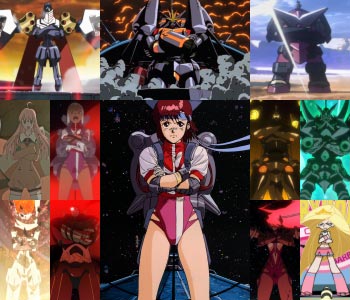
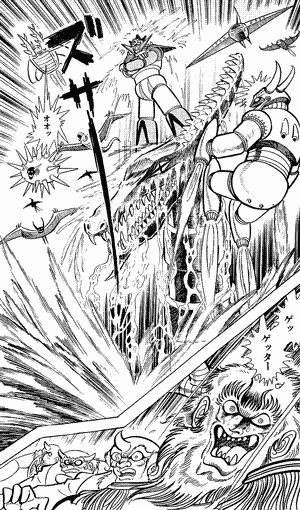
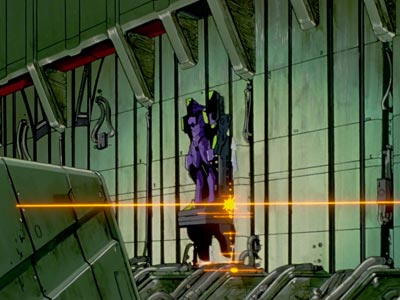
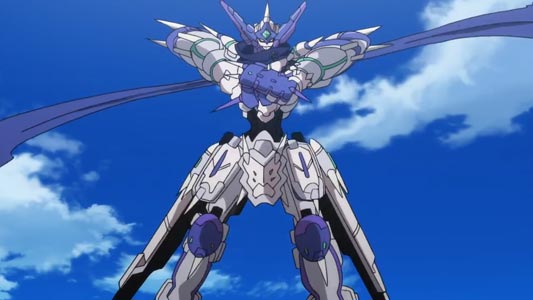
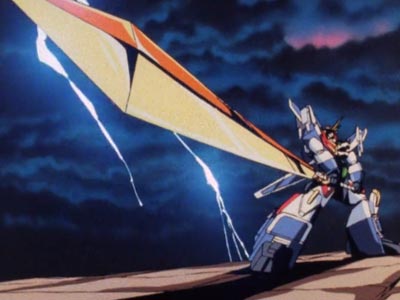
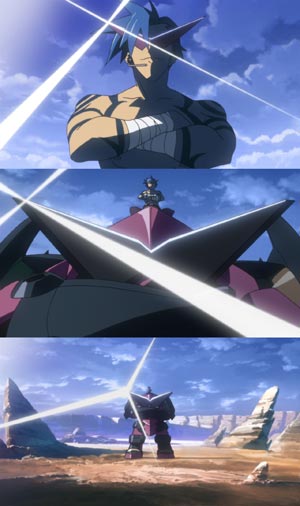


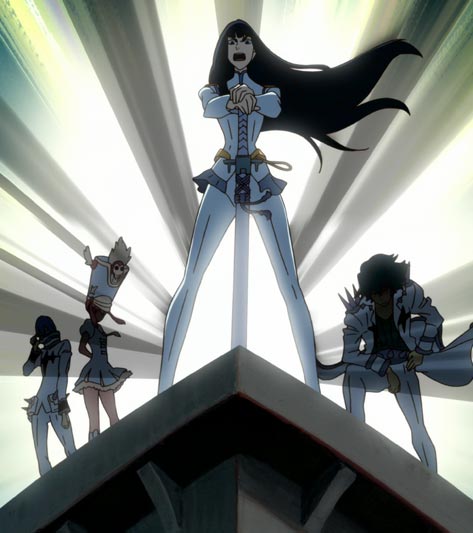
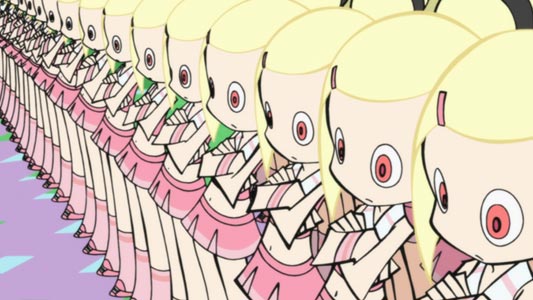


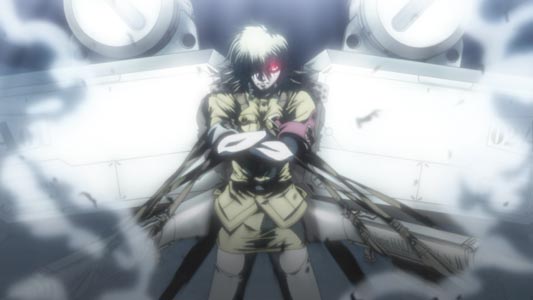
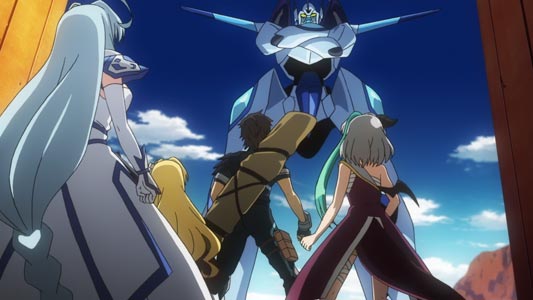
No comments: